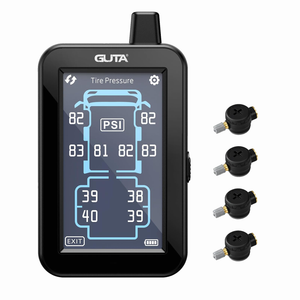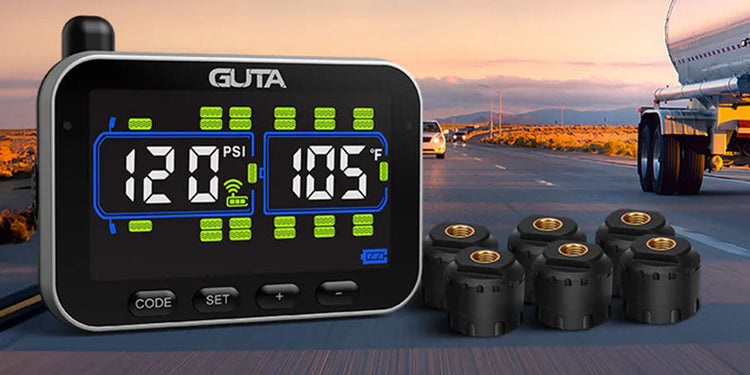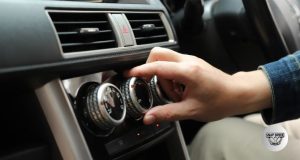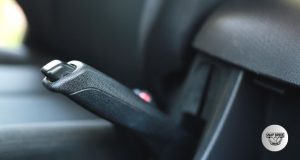Last Updated on October 16, 2025 by Aaron Blake
Have you ever wondered if your tires are always at the right pressure? Keeping your tires properly inflated is more important than you might think.
The Tire Pressure Monitoring System (TPMS) helps you stay safe on the road by alerting you when your tire pressure drops. Imagine avoiding unexpected blowouts, improving fuel efficiency, and extending the life of your tires—all with a simple system working quietly in the background.
Keep reading to discover why TPMS is a must-have for your vehicle and how it can protect you every time you drive.
Contents
How Tpms Enhances Road Safety
Tire Pressure Monitoring Systems (TPMS) help drivers keep tires at the right pressure. This system alerts when tire pressure is low or high.
Proper tire pressure improves car safety. It stops accidents caused by tire problems on the road.
Preventing Tire Blowouts
TPMS warns drivers about low tire pressure early. Low pressure can cause tires to overheat and blow out.
Tire blowouts are dangerous and cause loss of control. TPMS helps avoid these sudden failures by giving timely alerts.
- Detects low or high pressure quickly
- Alerts driver to fix tires before damage
- Reduces chances of tire bursting
Improving Vehicle Handling
Proper tire pressure keeps vehicle handling steady. Underinflated tires can cause poor steering and longer braking distances.
TPMS helps maintain correct pressure, so the car drives safely. Drivers can react better on slippery or rough roads.
- Maintains tire grip on the road
- Improves steering response
- Enhances braking performance
Reducing Accident Risks
Low tire pressure can cause accidents by reducing control and increasing tire wear. TPMS reduces these risks by giving alerts.
Safe tires help drivers avoid crashes. TPMS helps by keeping tires in good condition and alerting to problems fast.
- Alerts before tire failure
- Keeps tires safe and durable
- Supports overall vehicle safety

Credit: gutatpms.com
Economic Benefits Of Tpms
Tire Pressure Monitoring Systems (TPMS) help keep tires at the right pressure. This saves money by reducing fuel use and tire wear. TPMS alerts drivers when tire pressure is low. This allows quick fixes to avoid bigger costs.
Using TPMS can improve vehicle performance and lower expenses. Many drivers do not check their tire pressure often. TPMS makes it easy to maintain correct pressure all the time.
Fuel Efficiency Gains
Proper tire pressure reduces rolling resistance. This helps the engine use less fuel. Even a small drop in pressure can increase fuel consumption. TPMS helps keep tires at the best pressure to save fuel.
- Maintains optimal tire pressure
- Reduces fuel waste
- Improves miles per gallon (MPG)
- Lowers carbon emissions
Extending Tire Lifespan
Tires wear out faster if they are under or over inflated. TPMS helps keep tire pressure stable. This reduces uneven wear and tear. Correct pressure makes tires last longer, saving money on replacements.
| Pressure Level | Effect on Tire Life |
| Low Pressure | Increases wear on edges, shortens lifespan |
| Optimal Pressure | Even wear, longer tire life |
| High Pressure | Wear in center, risk of damage |
Lowering Maintenance Costs
Low tire pressure can cause damage to tires and suspension. TPMS alerts drivers early to prevent costly repairs. Keeping tires properly inflated reduces the chance of tire blowouts and uneven wear.
Maintenance savings include:
- Fewer tire replacements
- Less frequent wheel alignments
- Lower risk of suspension damage
- Reduced roadside assistance costs
Types Of Tire Pressure Monitoring Systems
Tire Pressure Monitoring Systems (TPMS) help drivers keep tires properly inflated. Proper tire pressure improves safety and saves fuel.
There are two main types of TPMS: Direct and Indirect. Each works differently to monitor tire pressure.
Direct Tpms
Direct TPMS uses sensors inside each tire to measure pressure. These sensors send real-time data to the car’s computer.
This system shows the exact pressure of each tire. It alerts the driver if any tire is low or losing air.
- Uses pressure sensors inside tires
- Provides real-time, accurate readings
- Alerts for each tire separately
- Needs battery-powered sensors
Indirect Tpms
Indirect TPMS does not use pressure sensors. It uses the car’s ABS or wheel speed sensors to detect changes in tire rotation.
This system estimates tire pressure by measuring wheel speed differences. A slower tire means it may be underinflated.
- Uses existing wheel speed sensors
- Estimates pressure by tire rotation
- No sensors inside tires needed
- Less accurate than direct TPMS
Choosing The Right System
Pick a TPMS based on your needs and car type. Direct TPMS is best for accuracy and fast alerts.
Indirect TPMS is cheaper and easier to maintain. It works well for many drivers but may miss slow leaks.
- Choose direct TPMS for precise pressure data
- Choose indirect TPMS for lower cost and simple setup
- Check compatibility with your vehicle model
- Consider sensor battery life for direct TPMS

Credit: gutatpms.com
Maintaining And Calibrating Tpms
Tire Pressure Monitoring Systems (TPMS) help keep your tires safe. They alert you if tire pressure is low or too high. Proper maintenance and calibration keep TPMS working well.
Regular care of the system ensures accurate readings. This helps avoid tire damage and improves car safety.
Regular Pressure Checks
Check your tire pressure often to keep TPMS accurate. Use a reliable tire gauge to measure pressure. Check tires when they are cold for best results.
- Check tire pressure at least once a month
- Inspect tires before long trips
- Adjust pressure according to the car manual
- Remember to check the spare tire too
Sensor Battery Life
TPMS sensors run on batteries that last several years. When the battery is low, the sensor may stop working. Replace the battery or sensor as needed to keep the system active.
| Battery Life | Average Duration | Signs to Replace |
| TPMS Sensor | 5 to 10 years | Warning light stays on or blinks |
Handling System Alerts
TPMS alerts warn you about tire problems. Do not ignore these alerts. Check the tires or visit a mechanic if needed. Reset the system after fixing any issues to keep it calibrated.
- Stop and check tires when alert appears
- Fix leaks or inflate tires as required
- Reset TPMS using the car’s manual instructions
- Consult a professional for sensor repairs

Credit: www.youtube.com
Frequently Asked Questions
What Is A Tire Pressure Monitoring System (tpms)?
TPMS is a device that checks tire air pressure and alerts when pressure is too low.
Why Is Tpms Important For Vehicle Safety?
It helps prevent accidents by warning about low tire pressure early.
How Does Tpms Improve Fuel Efficiency?
Proper tire pressure reduces drag, helping the car use less fuel.
Can Tpms Extend The Life Of My Tires?
Yes, it prevents uneven wear by maintaining correct tire pressure.
How Often Should I Check Or Maintain My Tpms?
Check TPMS sensors at least once a year or during tire changes.
Conclusion
Tire Pressure Monitoring Systems keep drivers safe on the road. They warn you about low tire pressure early. This helps avoid accidents and saves fuel. Tires last longer with proper pressure. Cars run better and use less gas. TPMS is an easy way to protect your vehicle.
It pays off by preventing costly repairs. Stay aware, drive safer, and save money. Trust your TPMS to keep tires in check. A small device with big benefits.





